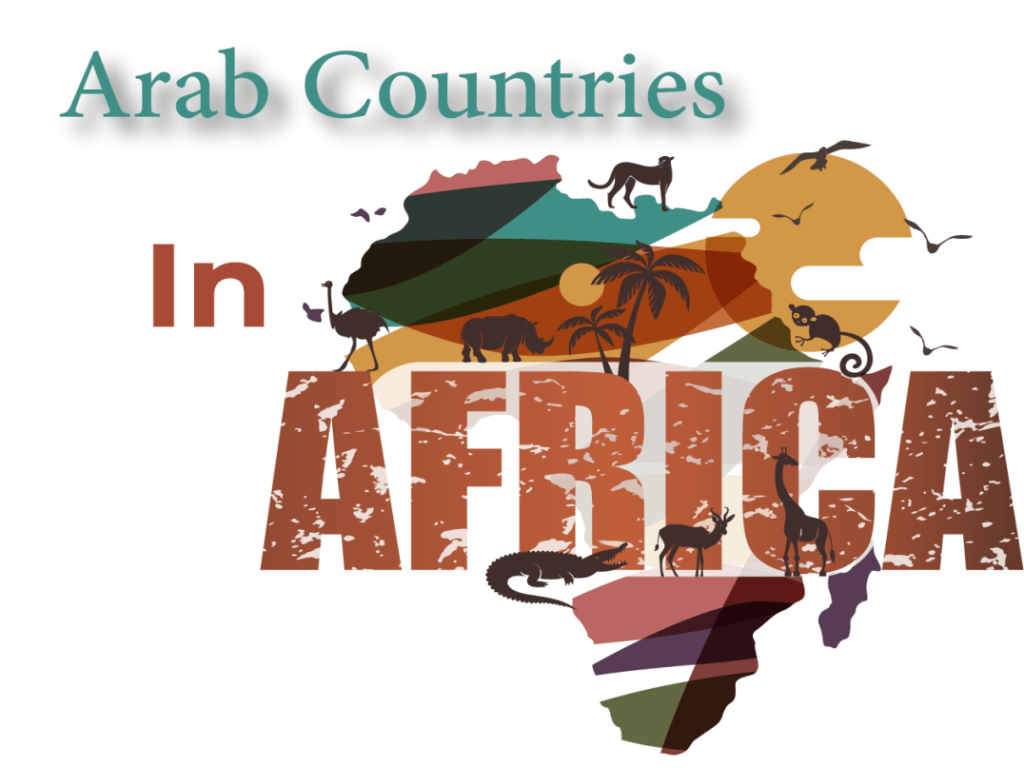Did you know that many Arab countries are on the African continent? There are ten Arab countries in Africa, and they are all members of the Arab League. This means about half of the Arab League’s 22 members are African nations. These countries, with their unique cultures and regional dialects of Arabic, are a fascinating and essential part of the Arab world.
How Many Arab Countries in Africa?
There are ten African Arab countries. They are:
- Algeria
- Comoros
- Djibouti
- Egypt
- Libya
- Mauritania
- Morocco
- Somalia
- Sudan
- Tunisia
This list covers all the Arabic speaking countries in Africa that also hold membership in the Arab League, a political and economic organization that promotes cooperation among its members.
List of Arabic Speaking Countries by Population
Arabic is the official language in over 20 nations across Africa and Asia. This list shows the significant populations of both the Arabic speaking countries in Africa and the Arabic speaking countries in Asia.
| African Arab Countries | Population (approx.) | Asian Arab Countries | Population (approx.) |
|---|---|---|---|
| Egypt | 116.5 million | Iraq | 46 million |
| Sudan | 50.4 million | Yemen | 40.5 million |
| Algeria | 46.8 million | Saudi Arabia | 33.9 million |
| Morocco | 38 million | Syria | 24.6 million |
| Somalia | 19 million | Jordan | 11.5 million |
| Tunisia | 12.2 million | United Arab Emirates | 11 million |
| Libya | 7.3 million | Lebanon | 5.8 million |
| Mauritania | 5.1 million | Palestine | 5.4 million |
| Djibouti | 1.1 million | Oman | 5.2 million |
| Comoros | 866 thousand | Kuwait | 4.9 million |
| Qatar | 3 million | ||
| Bahrain | 1.6 million |
This table highlights that while a majority of Arab nations are located in Asia, many of the most populous, like Egypt, Algeria, and Sudan, are in Africa. The total estimated population of the Arab world is over 490 million people.
Dialects of Arabic in Africa
The List of Arabic Speaking Countries shows a vast geographic area. The Arabic language spoken in these countries differs from place to place. These regional differences are known as Dialects of Arabic. Each dialect carries unique vocabulary, grammar, and pronunciation influenced by local history and neighboring languages.
- Maghrebi Arabic: This is the dialect of Northwest Africa, spoken in countries like Morocco, Algeria, and Tunisia. It has many influences from Berber, French, and Spanish, making it one of the more distinct dialects.
- Egyptian Arabic: Spoken in Egypt, this dialect is one of the most widely understood due to Egypt’s massive film and television industry, which has spread its influence throughout the Arab world.
- Sudanese Arabic: This is the dialect spoken in Sudan. It is known for its blend of Maghrebi, Egyptian, and other Eastern Arabic dialects, as well as influences from local African languages.
- Yemeni Arabic: Spoken in Yemen, Somalia, and Djibouti, this dialect has many archaic features, including ancient grammar structures, that set it apart from other modern dialects.
The Arab League and its Members
The Arab League is a regional organization of Arab states. A total of 22 nations are members, with a nearly equal split between Africa and Asia. There are 10 Arab and African countries in the Arab League and 12 from Asia. The league aims to strengthen ties among members in various fields, from politics to culture, and to coordinate their plans to benefit all members.
Beyond the Arab World
It’s also interesting to note that the Middle East is not exclusively Arab. Countries like Turkey, Iran, and Israel are considered to be Non-Arabic speaking countries in the Middle East. Turkey’s official language is Turkish, while Iran’s is Persian (Farsi). This shows the significant cultural and linguistic diversity of the region, which goes far beyond the Arabic language alone.
conclusion
The Arab countries in Africa are a crucial part of the Arab world, with a significant population and rich cultural heritage. Understanding their location, unique dialects, and role in regional organizations gives you a more complete picture of the Arabic-speaking world.
To continue your journey into the richness of the Arabic language and its cultures, consider using the Kaleela app. It provides comprehensive lessons on Modern Standard Arabic and various dialects, helping you master not just the words but also the traditions behind them.



